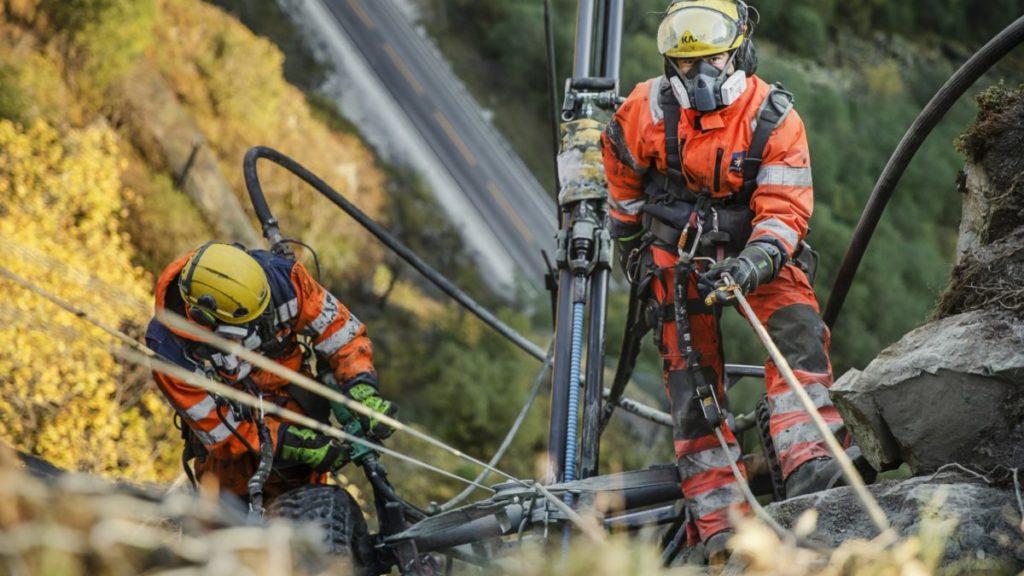
Approximately 60,000 workers in the Norwegian construction industry report being exposed to vibrations from handheld power tools for a quarter of the workday or more.
Strong and prolonged vibrations can cause injuries known as Hand-Arm Vibration Syndrome (HAVS).
This is an occupational disease, and the injuries occur because the vibrations propagate to the nerves and blood vessels in the fingers. In some cases, they also affect the joints and muscles in the hands and arms.
Risk of reduced functionality
– When you get injured from working with vibrating power tools, it leads to various problems, such as reduced function, pain, cold hands, white fingers, and cold intolerance. This affects a person’s ability to work, but also their everyday life. Simple tasks that require finger dexterity, like buttoning up a jacket, may become difficult, says STAMI-researcher Thomas Clemm. He has recently completed a PhD-degree on vibration exposure and neurological symptoms.
Together with colleagues at STAMI, Clemm has carried out a research project that has examined new technological solutions to reduce hand-arm vibrations.
In the project, they selected handheld power tools known to contribute to the risk of vibration injuries in the construction industry.
Modified rock drills
In collaboration with the IA industry program for construction and engineering, the contractor MESTA AS, and others, the researchers have investigated the effects of modifying such power tools.
They worked with rock drills used to insert bolts in the rock face to prevent rocks and boulders from falling onto roads. They selected two types of rock drills and installed ATVA technology. This is a mechanical device that dampens vibrations by creating counter motion with the same frequency as the vibration it is designed to dampen. They also installed spring-damping mechanisms on the handles of the rock drills. These spring dampening mechanisms could easily be retrofitted on ordinary rock drills.
Then the researchers tested the tools before and after the modifications.
Significant reductions are possible
– The project shows that it is possible to reduce vibrations from the relevant power tools, in some cases by more than 75 percent of the original vibration level. This will contribute to a lower risk of Hand-Arm Vibration Syndrome among workers, says Clemm.
He emphasizes that an important part of the project is to inform decision-makers about the possibilities offered by technical improvements to reduce the risk of Hand-Arm Vibration Syndrome.
– It is possible to incorporate measures both while constructing machines and through retrofitting damping technology. The knowledge from this project can also be transferred to other handheld and hand-operated machines, says the researcher.
Another advantage of reducing vibrations is that one can use the equipment for a longer time before reaching the intervention value than with power tools without vibration-damping technology. The intervention value is set at 2.5 m/s² for an eight-hour day.
The project receives financial contributions and practical implementation support from the initiative “IA Industry Program Construction and Civil Engineering,” which is one of seven industry programs in Norway under the Agreement for a More Inclusive Working Life 2019-2024.
The overall goal of the IA Industry Program is to contribute to reduced sick leave and withdrawal from the workforce. In addition to STAMI, the project involves scientific participants from RISE – Research Institutes of Sweden.
Project objectives:
- Increased knowledge among contractors and employees about the vibration levels of power tools commonly used in the construction and civil engineering industry.
- Increased knowledge among contractors and employees about measures that can help reduce vibration exposure, such as considering vibrations from the tools in purchase evaluations when acquiring power tools and machines.
- Development of power tool prototypes with technical modifications, including integrated damping mechanisms, to reduce vibration exposure.
- Increased scientific knowledge through documentation of the effects of vibration-reducing measures.

